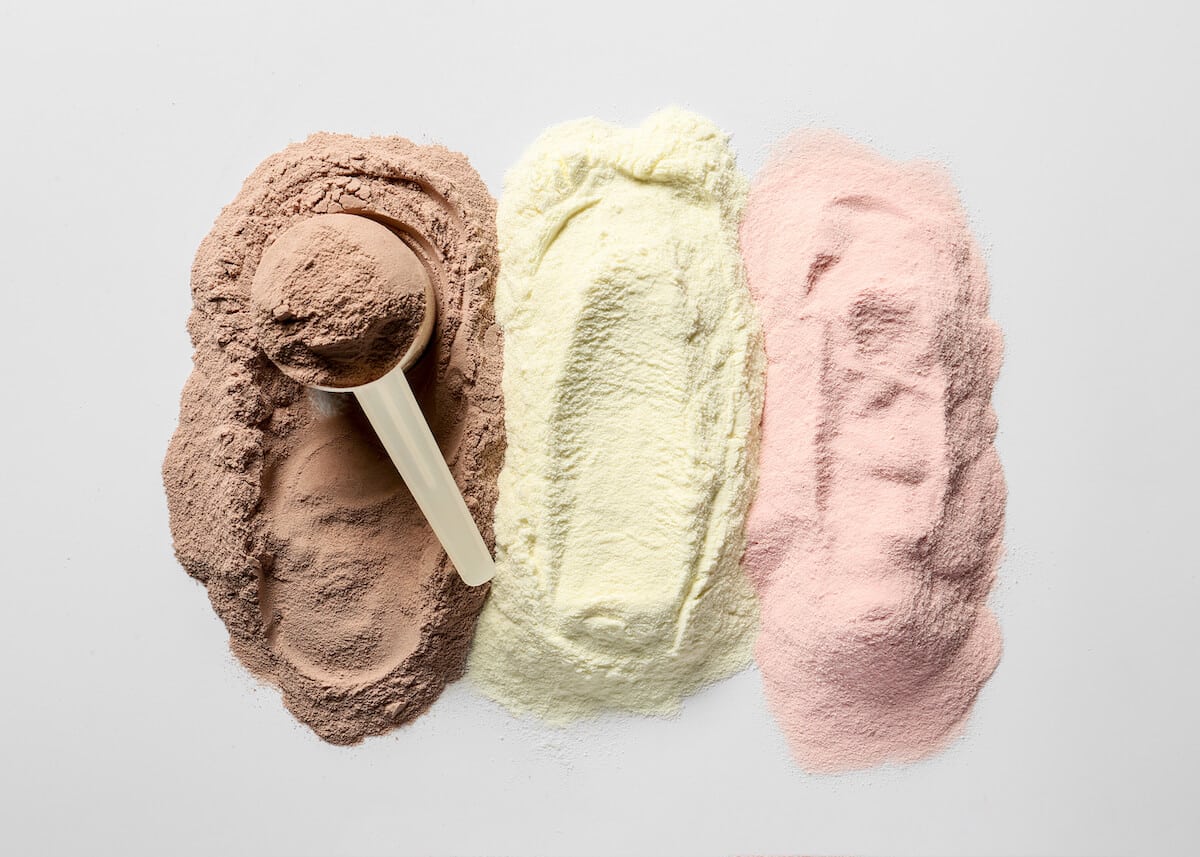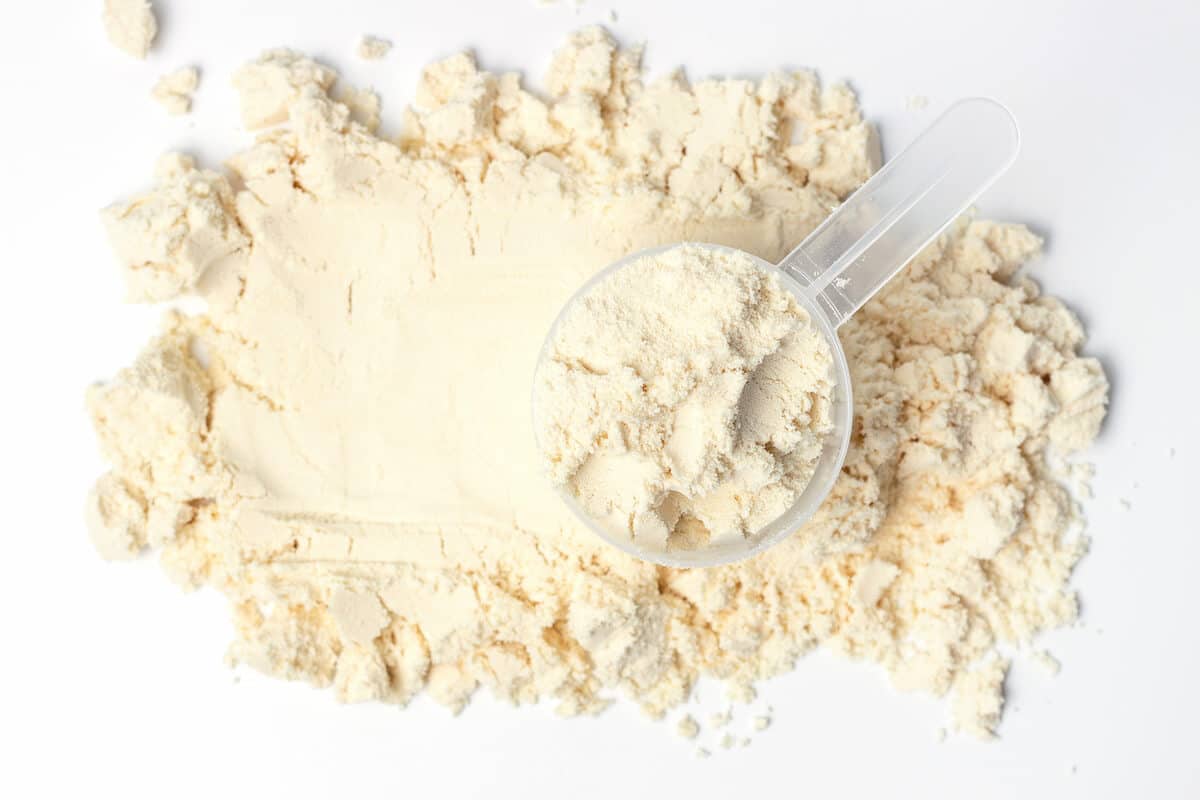
07 Nov Supplements 101: How Is Protein Powder Made?
Protein powder is infinitely useful, allowing you to bolster your diet with quick, healthy, high-protein supplements. But how is protein powder made? And does it matter?
You don’t have to be a bodybuilder or nutritionist to want to know what’s in your food. Whether you’ve been using protein powder for years or are considering it as part of a new weight loss and exercise routine, it’s important to find high-quality options.
Remember, all dietary supplements are not created equal, and if you want all the health benefits, you’ll need to look at the best protein powders on the market.
So, what exactly is protein powder? And how is protein powder made? What’s the best type of protein powder? And do different brands have different protein contents and nutritional values? This guide highlights everything you need to know about protein supplements, answering all your questions.
What Is Protein Powder?
Protein powder is the powdered form of protein extracted from various whole foods. Popular protein sources include cow’s milk and other dairy products, peas, quinoa, soybeans, hemp seeds, and brown rice. Protein powders generally contain all nine essential amino acids, giving your body the complete protein it needs for muscle growth and repair.
Each type of protein powder has different benefits. For example, brown rice protein powder is high in BCAAs, or branched-chain amino acids, which help build muscle mass. And casein is slow digesting, which can help keep you satiated for longer.
Likewise, various blends, brands, flavors, and forms of protein powder will contain different protein contents.
Dairy-Based Protein Powder
Dairy-based sources produce whey protein and casein protein powders. Whey protein powder is made from liquid whey, the byproduct of the cheese or casein-making process, and comes in forms like whey protein isolate, whey concentrate, and whey hydrolysate. And casein protein makes up 80% of goat’s or cow’s milk protein and is what allows solid curds to form during the cheese-making process.
Both whey and casein protein contain small amounts of lactose. So, plant-based protein powder may be better if you have dairy sensitivities or lactose intolerance.
Plant-Based Protein Powder
Plant-based sources are often titled accordingly. For example, pea protein powder comes from yellow split peas, soy protein powder from soybeans, and so on. The sources for plant proteins contain complete proteins and are just as beneficial as dairy-based sources.
Some plant-based protein powders contain more than one type of plant protein. For example, you might see a blend of quinoa, brown rice, and soy protein. Others are made from just one source, like pea protein powder.
How Is Protein Powder Made?

There are different processes for making protein powders, and they vary based on the type. However, the most significant difference is how plant-based and dairy-based protein powders are made.
This guide will examine both types to best understand how protein powder is made. For dairy-based supplements, we’ll look at how whey protein powder is made. And for plant-based supplements, we’ll look at how pea protein powder is made.
How Is Whey Protein Powder Made?
Despite the several forms of whey protein (e.g., whey protein concentrate, isolate, and hydrolysate), whey protein is always derived from milk. Liquid whey is separated from the solids in milk during the cheese-making process using heat or enzymes. It then goes through pasteurization and filtration processes before being dried into whey protein powder.
If the intended end product is whey protein isolate, the liquid whey is also purified to remove fat, carbohydrates, and lactose before drying. This reduces the number of calories and fat contained in the protein powder while increasing digestibility and making it okay for some people with mild lactose sensitivities.
Whey hydrolysate is more common in medical supplements and baby formula than in sports nutrition supplements. It goes through yet another process to break down the amino acid bonds. Most dietitians steer clear of whey hydrolysate as it doesn’t offer increased benefits for resistance training.
Side Effects
Whey protein generally does not cause many side effects. However, if you’re sensitive to lactose or consume very high doses, it may cause issues like stomach cramps, reduced appetite, and fatigue.
How Is Pea Protein Powder Made?
Pea protein powder is made by removing the outer shells of yellow split peas and milling them into flour. This flour contains protein, starchy carbs, and soluble fiber. The starches and fiber are removed via wet filtration and centrifugal processes, leaving a paste containing protein, vitamins, and minerals.
This paste is then dried into the powdered form of pea protein, known as pea protein isolate, which manufacturers can add to sports nutrition products like protein shakes and bars. It’s also used in bread products, cereals, and other foods to increase the amount of protein per serving.
Side Effects
Pea protein generally does not produce many side effects. It’s low fiber, which means that it typically doesn’t cause gassiness and bloating as whole peas and legumes can. However, it can be high in sodium, and you might want to watch your sodium intake when you add it to your diet.
What’s the Best Type of Protein Powder?
The choice between plant-based and dairy-based protein powder is up to you. But, again, plant-based supplements are likely the best choice if you’re lactose intolerant or looking for ways to make your diet more eco-friendly. And whey protein might be the better option if your body doesn’t respond well to pea protein.
There’s more to choosing the best type of protein powder than dairy vs. plant-based, though. It’s also about how much protein you’re getting for your dollar and whether it’s made from high-quality ingredients with high bioavailability.
Bioavailability
The bioavailability of your protein supplement refers to how easy it is for your body to absorb the protein. And when you consume protein powders treated for increased bioavailability, it produces higher levels of essential amino acids and branched-chain amino acids in the blood.
We recommend always looking for protein supplements made using Ingredient Optimized protein sources. Ingredient Optimized products are plasma modified to enhance the bioavailability of their proteins, and the results have been tested (and verified) in double-blind studies. The plasma modification adds another step to making these products while increasing the amount of protein your body can absorb from them.
“Protein supplementation with that has undergone Ingredient Optimized® atmospheric plasma treatment technology may be highly beneficial for improving the blood plasma amino acid response,” concluded one clinical study.
Top Protein Powders

Each brand of protein powder has varied protein contents and nutritional values and use different ingredients. Aside from the importance of Ingredient Optimized products, what else impacts the nutrient and protein content?
Here are some ingredients that can impact the protein content and nutritional values of your supplement:
- Sweeteners: Sugar and other sweeteners add carbs and calories.
- Artificial sweeteners: Artificial sweeteners avoid added carbs and calories.
- Flavors: Different flavors like cinnamon roll, peanut butter cookie, and vanilla ice cream use varying ingredients, which impacts the nutritional profiles.
- Protein source: The type and amount of protein powder in the product impact how many grams of protein each serving contains.
Your best bet is to look at the ingredient and nutrition label on each product you consider. This allows you to ensure it contains enough protein, carbs, and other nutrients in your meal plan. We recommend the following products made with Ingredient Optimized protein sources:
- The ioPEA from MyProtein
- ioWHEY Protein from Performix
- Plantein from Kaged
- Clean Meal from Kaged
Better Products = Better Results
So, how is protein powder made? Of course, the finer details depend on the protein powder and the quality of the product. But, in general, it’s made by extracting the protein from dairy or plant-based sources and drying it into a powder that companies can use in supplements and other products.
Ingredient Optimized protein powders are plasma modified for higher bioavailability, which means your body can absorb more protein from each serving. And since high-quality products aren’t cheap (you really do get what you pay for), it makes sense to opt for the supplement that’ll give you the most protein per scoop.


